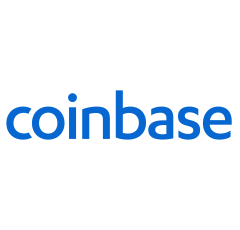This Week’s DeFi Interest Rates: Best Yields for Lending and Saving
| USDC | USDT | DAI | ETH | WBTC | ||
| Aave | 3.47% | 2.81% | 5.26% | 2.06% | 0.09% | Learn more |
| Compound | - | - | - | - | - | Learn more |
| Coinbase | 5.20% | - | - | 2.13% | - | Learn more |
| Vesper | 5.03% | - | 0.19% | 4.51% | 0.00% | Learn more |
Top DeFi Platforms by Loans
Here are the top DeFi platforms by active loans, so you can get a sense of their relative strength:
Leading DeFi Lending Rates
We track the best interest rates paid to depositors at five leading DeFi protocols. Here’s an introduction to each platform, and how much you can earn.

Aave
Aave is an established decentralized lending protocol where anyone can borrow and lend cryptocurrency. Powered by smart contracts on the Ethereum blockchain, Aave provides liquidity across 25 markets to enable digital asset investors to borrow funds or earn interest on idle digital asset holdings. Learn how to use Aave here.

Compound
Compound is the leading decentralized money market protocol and one of the longest-standing DeFi applications in the market. Offering lending markets for 12 digital assets, Compound allows investors to deposit funds and earn a variable yield or borrow against digital asset holdings. Learn how to use Compound here.

Coinbase
Coinbase has the most limited DeFi offerings, but perhaps the highest degree of trust. What you trade off in yield, you make up in reputation: some consider it the gold standard of crypto exchanges. A fully-licensed and publicly-traded U.S. company, Coinbase has over 73 million customers worldwide. Learn how to use Coinbase here.
dYdX
dYdX is a decentralized derivatives trading platform that also allows users to earn yield on funds they deposit in the Ethereum-powered application's smart contract. The interest rate paid will depend on supply and demand from depositors and borrowers on the DeFi application. Learn how to use dYdX here.

Vesper
Vesper is a promising DeFi application, backed by industry heavyweights, that currently allows you to earn yield using Vesper Grow. Via smart contracts, Vesper uses the pooled deposited digital assets and deploys them across multiple DeFi protocols and returns the yield to you. Learn how to use Vesper here.
Additional DeFi Lending Platforms
BENQI is a decentralized non-custodial liquidity market protocol. With over $289 million in total supplied, BENQI allows users to lend, borrow, and earn rewards on their digital assets. BENQI is ideal for those looking for low transaction fees and fast confirmation times, as it's built on the Avalanche protocol.
C.R.E.A.M. is a decentralized lending protocol on Ethereum, Binance Smart Chain, and Fantom. It is designed to support long-tail assets and provide various DeFi services on multiple chains, providing flexibility and accessibility to different DeFi ecosystems.
Yearn.finance is a DeFi protocol that provides lending and yield farming services on the Ethereum blockchain.Yearn.finance currently has a market cap of over $232 million. Yearn.finance has automated strategies ideal for individuals looking to maximize their yield.
Spark Protocol was built specifically to provide a flexible infrastructure for lending and borrowing. It offers variable and fixed interest rate options across different DeFi protocols, making it one of the more accessible options.
Morpho is a permissionless lending protocol built on a peer-to-peer matching algorithm that improves user lending and borrowing rates, while accounting for liquidity and risk requirements. By design, Morpho was created to optimize interest rates, leverage, and gas consumption for its users.
What Is DeFi?
Decentralized finance (DeFi) refers to open-source, blockchain-powered financial software that aims to provide financial products and services to anyone with an internet connection.
In today’s DeFi market, you can:
- Deposit digital assets into lending protocols to earn a yield;
- Borrow digital assets to access capital;
- Trade one digital asset for another via decentralized trading pools;
- Earn fees for providing liquidity to autonomous trading platforms;
- Invest in tokenized traditional assets (equities, commodities, and FX);
- Hedge your portfolio using decentralized derivatives;
- and more.
Arguably the biggest DeFi use case to date has been DeFi lending, which helps digital asset investors to earn a yield on their long-term holdings. Billions of dollars in cryptocurrency are locked into decentralized lending pools.
Why Are DeFi Rates Higher Than Traditional Interest Products?
The interest rates offered DeFi platforms are generally higher than traditional banks. This is due to the high demand for borrowing digital assets from professional and institutional investors.
These professional traders and institutions borrow crypto assets to take leveraged positions in the crypto markets. They aim to capitalize on market inefficiencies and price discrepancies, which can provide lucrative trading opportunities for experienced traders and investors.
The high borrowing demand from these sophisticated market participants drives up the interest rates on DeFi platforms, making them more attractive for lenders compared to traditional banking rates.
DeFi Lending Risks
Lending in the DeFi markets is not without its risks. Below, you will find the main risks in DeFi lending you should be aware of before deploying any capital in this new market.
- Code Risk - Vulnerabilities in a protocol's smart contract could lead to a complete loss of funds should bugs in the code be exploited by malicious third parties.
- Market Risk - Price volatility of the token's deposited could lead to a negative ROI for lenders if the market price drops more than the yield generated.
- Oracle Failure - Price oracles used in DeFi applications could fail, leading to mispricing and a loss of funds.
- Liquidity Risk - A lack of liquidity could lead to price slippage when converting your funds back into stablecoins, especially for smaller digital assets.
- De-pegging - If you've deposited a stablecoin or a pegged asset it is possible that they could de-peg, which could lead to losses.
Lending in the DeFi markets is a relatively new financial product and, as such, carries a higher risk than its established counterparts in the traditional lending markets. So as with any investment, it's advisable to not put all your eggs in one basket and only invest as much as you can afford to lose.
Investor Takeaway
Traditional loan approval is a time-consuming process that requires consumers to jump through hoops. DeFi loans receive approval at a much faster pace, typically at a more lucrative rate than offered in banks.
However, lending and borrowing in DeFi are typically riskier than in traditional markets. Technical and regulatory vulnerabilities do exist and should be accounted for when picking a lending platform. A high interest rate is not the only factor to consider.
To stay up-to-date with the latest trends and developments in the digital asset markets, subscribe to the Bitcoin Market Journal newsletter.
The post This Week’s DeFi Interest Rates: Best Yields for Lending and Saving appeared first on Bitcoin Market Journal.




